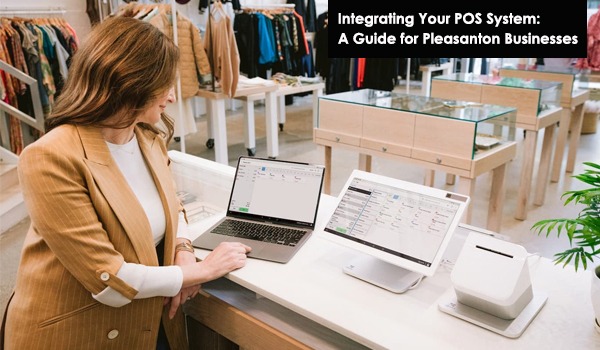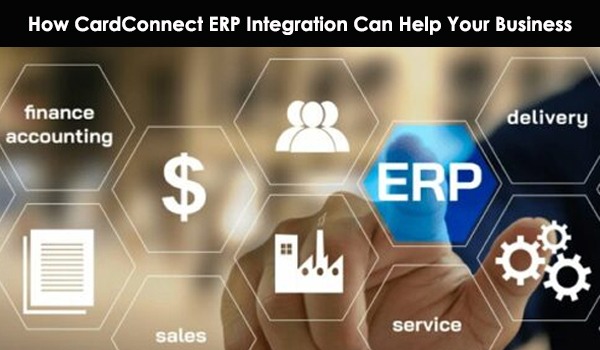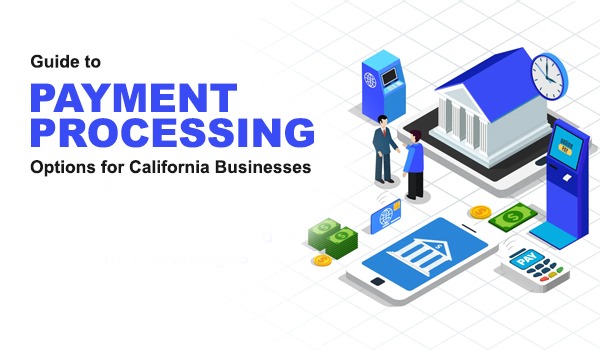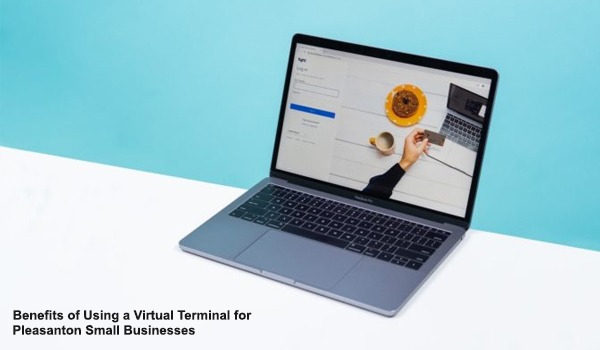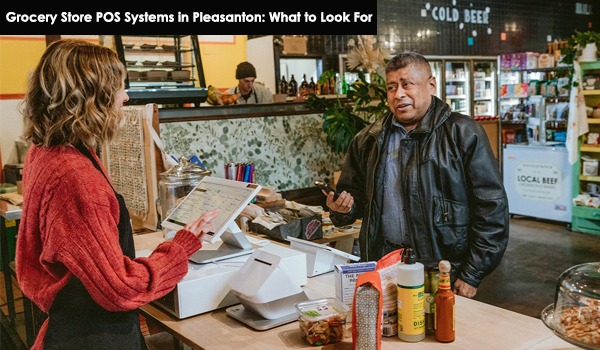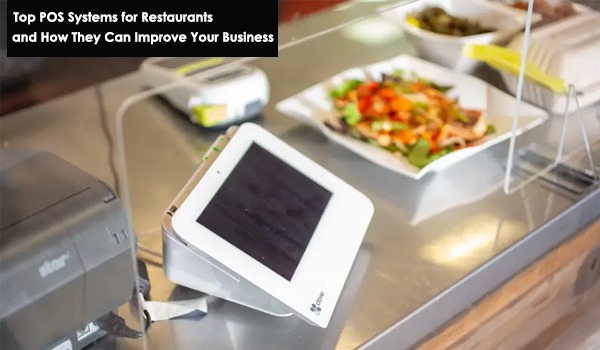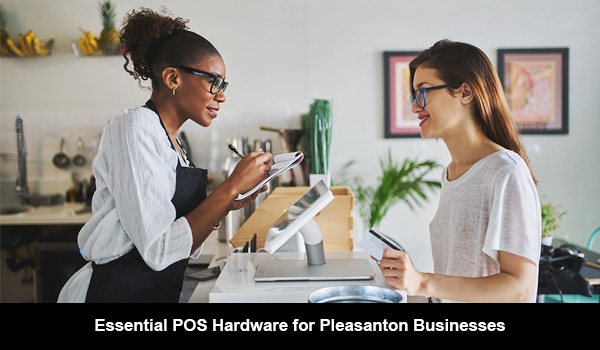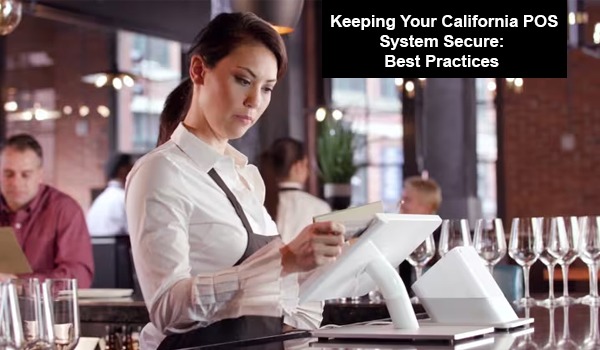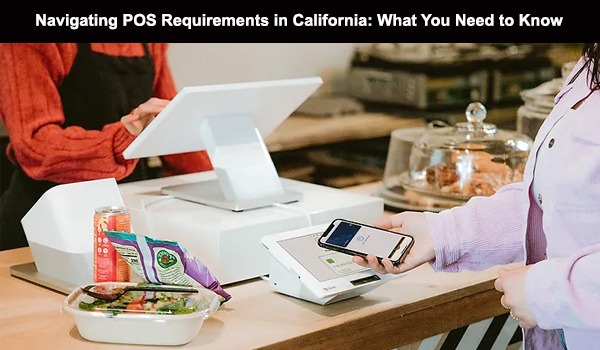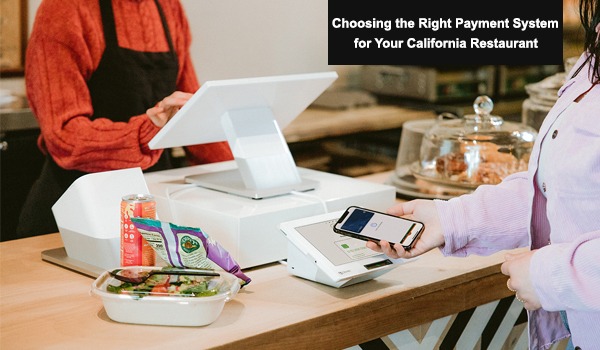
Introduction
In California's vibrant and competitive restaurant industry, providing a seamless and efficient payment process is crucial for ensuring customer satisfaction and maintaining smooth operations. With a myriad of options available, choosing the right payment system can be overwhelming. This blog will guide you through the critical factors to consider when selecting a payment system tailored to the specific needs of your California restaurant.
Understanding Your Restaurant's Unique Needs
Each restaurant has its own unique set of requirements, influenced by factors such as size, customer base, and service style. To choose the right payment system, it’s essential to have a clear understanding of these needs:
- Restaurant Type and Service Style: Whether you operate a fast-casual eatery in Los Angeles or a fine-dining establishment in San Francisco, the payment system you choose should align with your service style. For instance, a high-end restaurant might prioritize features like advanced security and mobile payment options, while a quick-service spot may need a system that focuses on speed and ease of use.
- Average Transaction Volume: Consider the average number of transactions your restaurant handles daily. A busy establishment with high transaction volumes will benefit from a payment system that can process payments quickly and efficiently, minimizing wait times for customers.
- Peak Business Hours: Identify your peak business hours and ensure that your payment system can handle high traffic during these times without slowing down. A system with high processing speeds and minimal downtime is crucial for maintaining smooth operations during rush periods.
- Preferred Payment Methods: Understanding the payment preferences of your clientele is key. For example, if your customers frequently use mobile wallets like Apple Pay or Google Wallet, your system should accommodate these options. Offering a variety of payment methods can enhance customer satisfaction and streamline the checkout process.
- Scalability: Consider whether your restaurant plans to expand in the future. A scalable payment system that can grow with your business will save you the hassle of switching systems down the line. This is especially important for restaurants with ambitions to open multiple locations.
Evaluating Key Features and Functionalities
Selecting the right payment system for your restaurant involves identifying features that meet your operational needs and enhance the overall customer experience. Here’s what to consider:
- Split Billing and Customizable Tip Options: Your payment system should allow for easy split billing, especially in a dine-in setting where groups often prefer to divide the check. Customizable tip options can also encourage higher tips and simplify the tipping process for both customers and staff.
- Support for Multiple Payment Methods: In today’s diverse payment landscape, your system should accept a variety of payment methods, including credit/debit cards, mobile payments, and contactless transactions. This flexibility ensures you can cater to all customer preferences, enhancing convenience and customer satisfaction.
- Integration with POS Systems and Other Software: Seamless integration with your existing POS system is crucial for efficient operations. Look for a payment system that can easily connect with other essential software, such as inventory management, order tracking, and loyalty programs. This integration can help streamline workflows, reduce errors, and improve overall efficiency.
- Real-Time Data and Reporting: Access to real-time data and reporting features can be invaluable for managing your restaurant. A good payment system should provide insights into sales trends, peak times, and customer preferences, helping you make informed decisions about staffing, inventory, and marketing efforts.
- Security and Compliance: Ensure that the payment system you choose is compliant with PCI DSS standards and offers robust security features, such as encryption and tokenization, to protect sensitive customer information. This is particularly important in California, where stringent data protection laws, like the CCPA, are in place.
- Customer Experience Enhancements: Consider features that can enhance the customer experience, such as tableside payment options, digital receipts, and loyalty program integration. For example, California’s tech-savvy diners might appreciate the convenience of using Apple Pay or Google Wallet, making these integration capabilities a must-have.
- Scalability and Flexibility: Your payment system should be scalable to accommodate future growth. Whether you plan to open additional locations or expand your service offerings, choose a system that can easily adapt to your evolving needs without requiring a complete overhaul.
Compliance with Local Regulations
Operating a restaurant in California means adhering to specific state and local regulations, especially regarding payment processing and data security. Ensure your payment system complies with the California Consumer Privacy Act (CCPA) and PCI DSS (Payment Card Industry Data Security Standard) requirements. This not only protects your customers' sensitive information but also shields your business from potential legal repercussions. Additionally, staying compliant with minimum wage laws and tip reporting requirements is essential, and the right payment system can help streamline these processes.
Assessing Customer Support and Reliability
A reliable payment system is vital to avoid disruptions during peak business hours. When evaluating options, consider the provider’s reputation for uptime and reliability. Additionally, robust customer support is a crucial factor. In case of issues, you need to know that help is readily available, whether through 24/7 phone support, live chat, or a dedicated account manager. Restaurants in tourist-heavy areas like Napa Valley or San Diego, where downtime can significantly impact revenue, should prioritize providers known for exceptional support and reliability.
Cost Considerations and ROI
The cost of implementing a new payment system involves more than just the initial purchase price. Consider the ongoing fees, such as transaction fees, maintenance costs, and potential upgrade expenses. Weigh these against the potential return on investment (ROI), which could include increased efficiency, faster transaction times, and improved customer satisfaction. For example, while a high-end system might have a higher upfront cost, the long-term benefits, such as reduced chargebacks or enhanced customer loyalty, can justify the investment.
Future-Proofing Your Payment System
The restaurant industry is rapidly evolving, and so is payment technology. Choosing a system that can adapt to future trends is essential for long-term success. Look for providers that offer regular updates, support for emerging payment methods like cryptocurrency, or the flexibility to scale as your business grows. This is particularly important in California, where trends in technology and consumer behavior often set the stage for broader national shifts. By selecting a future-proof payment system, you can ensure your restaurant remains competitive and ready to meet the demands of tomorrow’s customers.
Enhancing Customer Experience with Payment Solutions
The payment process is a crucial touchpoint, often being the final interaction customers have with your restaurant. A smooth and efficient payment experience can leave a lasting positive impression and significantly impact overall customer satisfaction. To enhance the dining experience, consider the following features in your payment system:
- Tableside Payment Options: Implementing tableside payment options allows customers to settle their bills right at the table, reducing wait times and minimizing disruptions. This feature is especially beneficial in full-service restaurants, where personalized service is a key component of the dining experience.
- Digital Receipts: Offering digital receipts not only reduces paper waste but also provides customers with a convenient way to keep track of their expenses. This eco-friendly option is increasingly popular among California diners who value sustainability and modern conveniences.
- Loyalty Program Integration: Integrating your payment system with a loyalty program can boost customer retention and encourage repeat visits. By allowing customers to earn and redeem rewards seamlessly during the payment process, you enhance their overall experience and foster a sense of loyalty to your restaurant.
- Contactless and Mobile Payment Solutions: With the rise of contactless payments and mobile wallets, providing these options can greatly enhance the checkout experience. California’s tech-savvy and health-conscious diners appreciate the speed and hygiene benefits of contactless transactions, making this an essential feature for modern restaurants.
- Customizable Payment Options: Offering a range of payment options, including split billing and customizable tipping, can cater to diverse customer preferences. This flexibility ensures that the payment process is as smooth and convenient as possible, leaving customers with a positive impression as they leave your establishment.
- Efficient Checkout Process: Streamlining the checkout process by minimizing steps and reducing processing times can significantly enhance the customer experience. A payment system that integrates seamlessly with your POS system ensures that orders, payments, and receipts are handled swiftly and accurately.
- Personalized Customer Interactions: Leveraging data from your payment system to personalize customer interactions can create a more memorable dining experience. For example, recognizing a returning customer and offering tailored discounts or menu recommendations based on past orders can enhance their sense of connection to your restaurant.
Integration with Marketing and Loyalty Programs
A modern payment system can do more than process transactions; it can also support your marketing and customer retention efforts. Look for systems that integrate seamlessly with your loyalty programs and customer relationship management (CRM) tools. This integration allows you to track customer preferences, send targeted promotions, and reward repeat business. In California's competitive restaurant market, where customer loyalty can make or break a business, leveraging your payment system to enhance marketing efforts can provide a significant advantage.
Exploring Hardware Options: KDS and Kiosks
The hardware components of your payment system are just as critical as the software in ensuring smooth operations and enhancing the customer experience. Modern restaurants are increasingly adopting advanced hardware like Kitchen Display Systems (KDS) and self-service kiosks to meet the demands of a tech-savvy clientele and to streamline their processes. Here’s how these hardware options can benefit your restaurant:
- Kitchen Display Systems (KDS): A KDS replaces traditional paper tickets with digital screens in the kitchen, enhancing communication between the front and back of the house. Orders are displayed clearly and can be updated in real-time, reducing the likelihood of errors and improving order accuracy. This is especially beneficial in high-volume settings like bustling urban eateries, where quick and accurate service is essential to maintaining customer satisfaction.
- Improved Service Speed: By streamlining the flow of information from the point of sale to the kitchen, a KDS can significantly speed up service times. Orders are processed more efficiently, allowing your kitchen staff to focus on preparation rather than deciphering handwritten notes or dealing with lost tickets. This results in faster order completion and shorter wait times for customers, which is crucial in maintaining a positive dining experience.
- Self-Service Kiosks: Self-service kiosks offer customers the convenience of placing their own orders and making payments without waiting for staff assistance. This option is particularly ideal for fast-casual and quick-service restaurants, where speed and efficiency are key. Customers can browse the menu at their own pace, customize their orders, and complete transactions quickly, which can enhance their overall experience.
- Reduced Labor Costs: By allowing customers to place their own orders, self-service kiosks can reduce the need for front-of-house staff, potentially lowering labor costs. Additionally, kiosks can handle a high volume of orders during peak times, alleviating pressure on your team and enabling them to focus on other tasks, such as customer service or food preparation.
- Enhanced Customer Experience: Kiosks can also improve the customer experience by providing clear, easy-to-navigate menus with images and descriptions of each dish. This can help customers make informed decisions and reduce the likelihood of order mistakes. In California’s tech-forward market, where diners are accustomed to fast, efficient service, kiosks can offer a competitive edge.
- Data Collection and Insights: Both KDS and kiosks can provide valuable data on customer preferences and ordering patterns. This information can be used to optimize menu offerings, manage inventory more effectively, and tailor marketing efforts to specific customer segments. For instance, if your kiosk data shows a high demand for certain menu items, you can adjust your inventory and marketing strategies accordingly.
- Integration with POS Systems: Ensure that your KDS and kiosks integrate seamlessly with your existing POS system. This integration allows for real-time updates, accurate order tracking, and consolidated reporting, providing a holistic view of your restaurant’s operations. It also ensures that all components of your payment system work together harmoniously, contributing to a smooth and efficient workflow.
Streamlining Menu Management and Inventory Control
Effective menu management and inventory control are critical to the smooth operation and profitability of any restaurant. A modern payment system should not only facilitate transactions but also integrate seamlessly with your POS system to support these essential functions.
- Real-Time Menu Updates: A payment system integrated with your POS allows for real-time updates to your menu. This includes changes in pricing, availability, and specials, ensuring that your staff always has the most current information. Whether it's a seasonal dish or a daily special, real-time updates reduce the likelihood of errors, such as offering items that are out of stock, and help maintain a consistent customer experience.
- Efficient Order Management: With integrated menu management, orders are processed more efficiently, and communication between the front and back of the house is streamlined. This not only speeds up service but also ensures that your kitchen staff receives accurate and up-to-date information, reducing the chances of mistakes and improving overall service quality.
- Inventory Tracking: An integrated payment system can also track ingredient usage in real time, helping you monitor stock levels and prevent shortages. This is especially important in California, where many restaurants emphasize local and seasonal ingredients. By tracking inventory closely, you can ensure that you always have the necessary ingredients on hand to meet customer demand without overstocking, which can lead to waste.
- Minimizing Waste: Accurate inventory tracking helps minimize waste by allowing you to order only what you need, reducing the risk of spoilage and overproduction. For example, if your system shows that a particular dish is selling less than expected, you can adjust your orders accordingly, avoiding unnecessary waste and controlling costs more effectively.
- Optimizing Ordering Processes: Integrated inventory management streamlines the ordering process by providing detailed insights into stock levels and consumption patterns. This allows you to optimize your purchasing decisions, ensuring that you always have the right amount of inventory on hand. For restaurants in California, where fresh and local ingredients are often a selling point, this is particularly valuable.
- Improved Cost Control: Effective inventory management is directly linked to cost control. By reducing waste and optimizing your ordering processes, you can maintain better control over your food costs, which is crucial for profitability. A payment system that supports these functions helps you manage your budget more effectively, contributing to the overall financial health of your restaurant.
- Enhancing the Dining Experience: Consistency is key to a positive dining experience. By ensuring that your menu is always accurate and that your kitchen is well-stocked with the necessary ingredients, you can maintain the quality and availability of your dishes. This consistency helps build customer trust and satisfaction, which is vital in California’s competitive restaurant market.
- Data-Driven Insights: A modern payment system can provide valuable data on menu performance, such as which items are most popular and which are underperforming. These insights can inform menu adjustments, helping you focus on dishes that resonate with your customers while phasing out those that do not. This data-driven approach ensures that your menu remains fresh and appealing, catering to evolving customer preferences.
Conclusion
Choosing the right payment system for your California restaurant is a critical decision that impacts your business’s efficiency, customer satisfaction, and compliance with local regulations. By understanding your unique needs, evaluating key features, ensuring regulatory compliance, considering cost and future trends, exploring hardware options like KDS and kiosks, enhancing customer experience, integrating with marketing efforts, and streamlining menu management and inventory control, you can select a payment system that not only meets your current requirements but also supports your restaurant’s growth in the dynamic California market.
